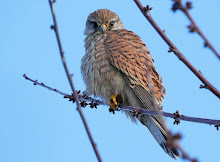

Catching sight of a speckled wood butterfly isn’t a big deal in many parts of the country, but up here in County Durham it was, until about three years ago, something to get excited about. Until the 1840s this butterfly was quite common in the region, then it went into steep decline. When Tom Dunn and Jim Parrack published ‘The Moths and Butterflies of Northumberland and Durham’ in 1986 they considered it to be extinct in both counties but wistfully noted that “since it still survives in Yorkshire it is theoretically possible for it to return”. How heartening, then, to find that over the last few years it has recolonised both counties, moving rapidly northwards. It seems that climate change is the reason. I photographed this one in Durham University Botanic Garden yesterday.
































































